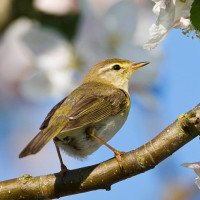Opis
Runmarö island was formerly used as a navigator lookout due to its strategic position close to important shipping routes. The ground consists of limestone and grants conditions for many interesting plants, especially orchids (at least 27 different kinds) and Apollo butterflies. But also birds benefit from the plant diversity and this remote island is well worth a visit.
Among the breeding birds in the island's forests are nur czarnoszyi, (lakes Vitträsk and Uppeby träsk), lerka, paszkot, dzięciołek, krętogłów, sóweczka, (March), lelek (May-June northeast of Uppebyträsk) and krzyżodziób sosnowy. The latter species is something of a Middle Archipelago specialty in the Stockholm area, and Runmarö is one of the places where the species is most easily seen. More common birds that can be easily observed include kruk, białorzytka, pliszka siwa, piecuszek, dzięcioł duży, czyż, trznadel and paszkot.
Szczegóły
Dostęp
Runmarö is one of the nearest islands in the Värmdö archipelago; the boat trip from Stavsnäs takes just 10 minutes and the boats go regularly all year round. The island is most easily reached by bus (433/434 from Slussen) to Stavsnäs winter harbor and then Waxholmsbåt to Styrsvik's (central) or Långvik's (northern part) jetty. As the island is quite large (11 x 8 km), it may be a good idea to bring a bicycle or rent one at the shop in Styrsvik.



